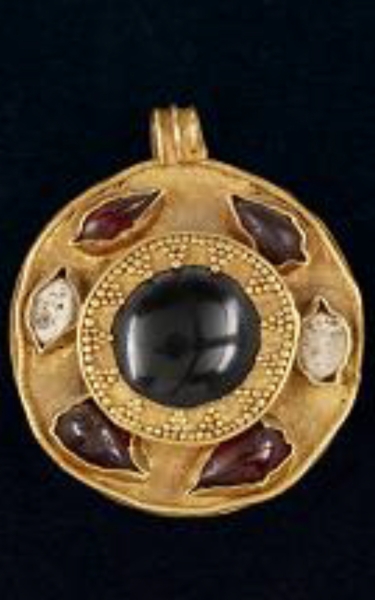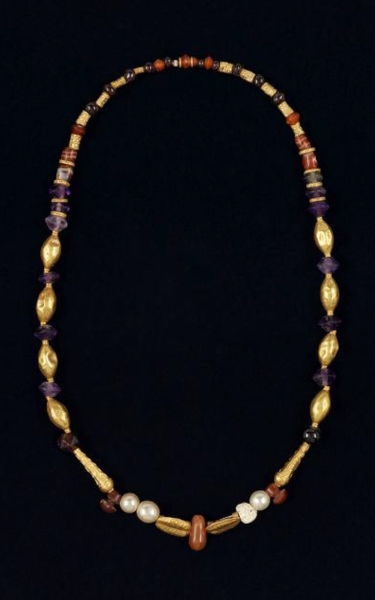


The Ain Jawan Archaeological Site is located in the Eastern Province of the Kingdom of Saudi Arabia, at the northwestern corner of the Tarout Bay. This site dates back to the era from the fourth century BCE to the sixth century CE. It is situated three km from the Arabian Gulf coast, specifically north of Safwa town in Qatif Governorate, Eastern Province, about six km away. The site is also referred to in Arabic sources as "al-Junain" or "al-Junan," and it is believed to have been an independent settlement mentioned in Ptolemy's map as the "Bilbana Settlement."
Area of Ain Jawan site
Ain Jawan is one of the largest archaeological sites in the Kingdom, with an estimated area of about two hundred ha. Its historical importance is linked to the trade movement in the Eastern Province during the first millennium.
This vast area features remains of pilaster heads of some stone and mud buildings, plastered with a white gypsum layer, and contains small-sized graves. Among the site's notable finds is an inscribed slab in Ancient South Arabian script (Musnad) for a woman's grave named Jashm Bint Amrah Bin Tahiyu from Al Aour of the Shadub tribe, as well as pottery collections made of a unique pottery material.
History of Ain Jawan
Ain Jawan is an archaeological settlement site that records seven archaeological layers within three settlement phases. The first phase dates back to before the fourth century BCE, followed by two phases with architectural buildings from the Hellenistic, Roman, and Byzantine periods.
Excavation at Ain Jawan
The first excavation journey for Ain Jawan began in the 1940s when Saudi Aramco used the site as a quarry to fill the coastline of Ras Tannurah Port. However, the fieldwork for the project allowed the discovery of the lost city, where workers uncovered unknown buildings and artifacts beneath the sands.
Continuing excavation at Ain Jawan
In the 1950s, Saudi Aramco assigned the archaeologist Frederick Schmidt Vidal to continue excavation at the site. The archaeological excavations lasted twenty-two months, providing a significant part of the current knowledge about the archaeological Jawan site. This period also witnessed the discovery of the city's tomb, now known as the Jawan Tomb.
Ain Jawan archaeologist tomb
The tomb is a structure built from local limestone, accommodating six individuals. It consists of a large hall surrounded by five rooms, each containing one grave except the eastern room, which contains two graves. The tomb contains a range of archaeological finds, such as scattered remains of ninety skeletons, pottery and glass fragments, a small bronze knife, and beads made of glass and stone.
Related quizzes
Related articles
